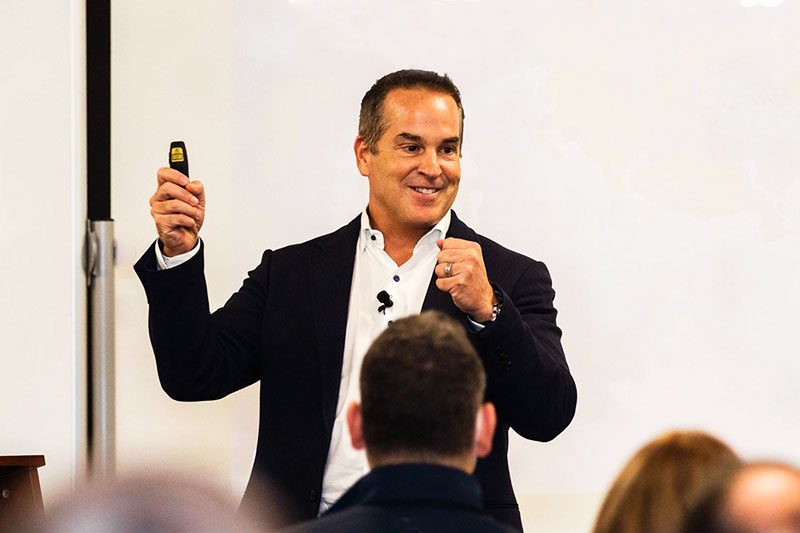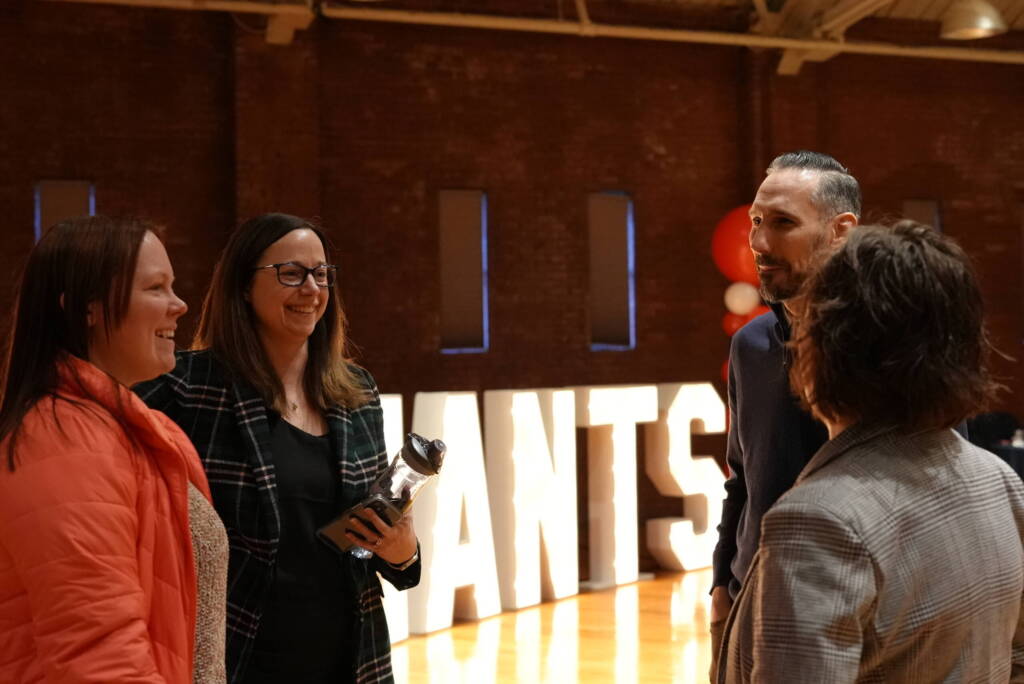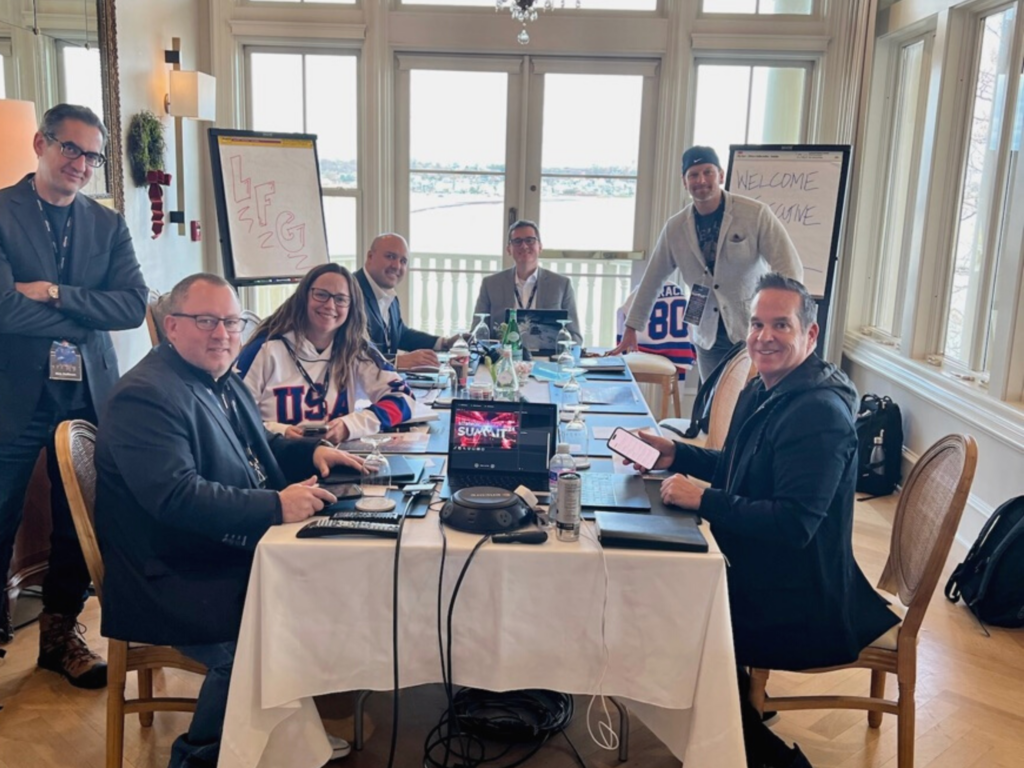Type “leadership” and “team sport” into Google and you’ll find a long list of experts confirming that yes, in fact, leadership is a team sport. Anyone who knows me knows that I share that philosophy. I see LEADERSHIP as the willingness to accept responsibility to organize a group of people to achieve a common goal.
That common purpose may be scoring touchdowns on the football field, goals on the soccer field, servicing more customers, or doubling the number of EVs in your fleet. No matter the common goal, it won’t and can’t be accomplished alone—it takes a team effort.
It’s certainly easy to embrace the “team sport” mindset when watching an event like the final of the World Cup 2022. The power of a cohesive team is crystal clear when in full view on the field as it was in this moment:
Di Maris made the final kick that scored the game, but it was four of his teammates who made that kick possible, and preparation for that moment happened long before the World Cup. That magic of connectedness isn’t only possible for athletes, it’s possible for all teams when they train, support, communicate and come together for a purpose greater than themselves. No one knows that better than Director at NH Department of Safety / Division of Homeland Security and Emergency Management and former Fire Chief, Rob Buxton.
Q: There aren’t many people who are willing to run into burning buildings. How do you get your firefighters to do just that?
First, you need to understand that everybody who gets into the fire service industry does it because they want to have a positive impact in their community, so on some level, they come ready to do what needs to be done. Second, fire service is a team sport. Just as the football team needs to work together to move the football down the field; the fire service team needs to work together to put the fire out. To do that, we must be able to rely on each other’s skills and abilities.
My role as chief was to help the team recognize, develop, and learn to rely on their skills and capabilities both individually and collectively.
Q: And I imagine that hand-in-hand with that recognition of one’s abilities is the recognition of one’s inabilities.
Yes. It’s interesting, right? So, when we go to a fire or a car accident or a technical rescue, whatever it is, the leader of the group is sizing it up and making a judgment based not only on their experience and their skillset, but the experience and skillset of each member of the team and the team as a whole. Communication is key to that assessment. If a team member is not at a hundred percent, they need to communicate that to their team leader and figure out how they can still support their teammates.
In addition to assessing the people, the leader is the sizing up of the equipment and resources available and the level of risks involved and how we can best mitigate those risks.
Q: How do you prepare for that?
We have to first identify all possibilities that we may face, the potential risks involved, and how to mitigate those risks. To prepare for all those possibilities and risks, we constantly train as a team. We train the way we play, meaning every skill we learn is a skill that we will utilize in our job.
When I think about team development, it comes back to communication and how you bring people into the fold. In the fire station, the kitchen table is the great equalizer. The kitchen table doesn’t have rank. Everyone has the opportunity to sit there and talk. If you have a concern, that’s a place where you can share your concern and have a conversation with the team about it.
I’ve found that when you get people talking, you find out that they have the same concerns that you do. They may not want to be upfront and share that, but often we’re all feeling the same thing. Firefighters do things that the normal person doesn’t do—put on seventy-five pounds of gear in 100-degree weather and run into a burning building—so, it’s critical that a leader gives their team opportunities to communicate about those challenges.
That might be saying to your team, “Hey, that call went really well, and here’s why it was so important,” or “That was a pretty stressful call. Does anybody have any concerns? Did we operate well as a team?” In our world, even when we may have performed at our absolute best, things don’t always turn out as we hoped, homes and sometimes lives are lost. That needs to be acknowledged too. “Even though it didn’t get the outcome we wanted, we all operated really well together today.” That hard reality isn’t something that is easy to shake off and as leaders, we need to provide opportunities for the team to talk about how their work impacts them outside of the station.
Q: What advice do you have for new leaders?
Remember that everybody wants to be valued. Even as a young leader, I always made sure I had an understanding of who my team members were, what they brought to the table, and how I could help them be successful. As a leader it’s your job to help your team contribute to the goal that you’re trying to achieve.
From the first day you walk in as a leader until the last day you walk out, it’s all about your people.














